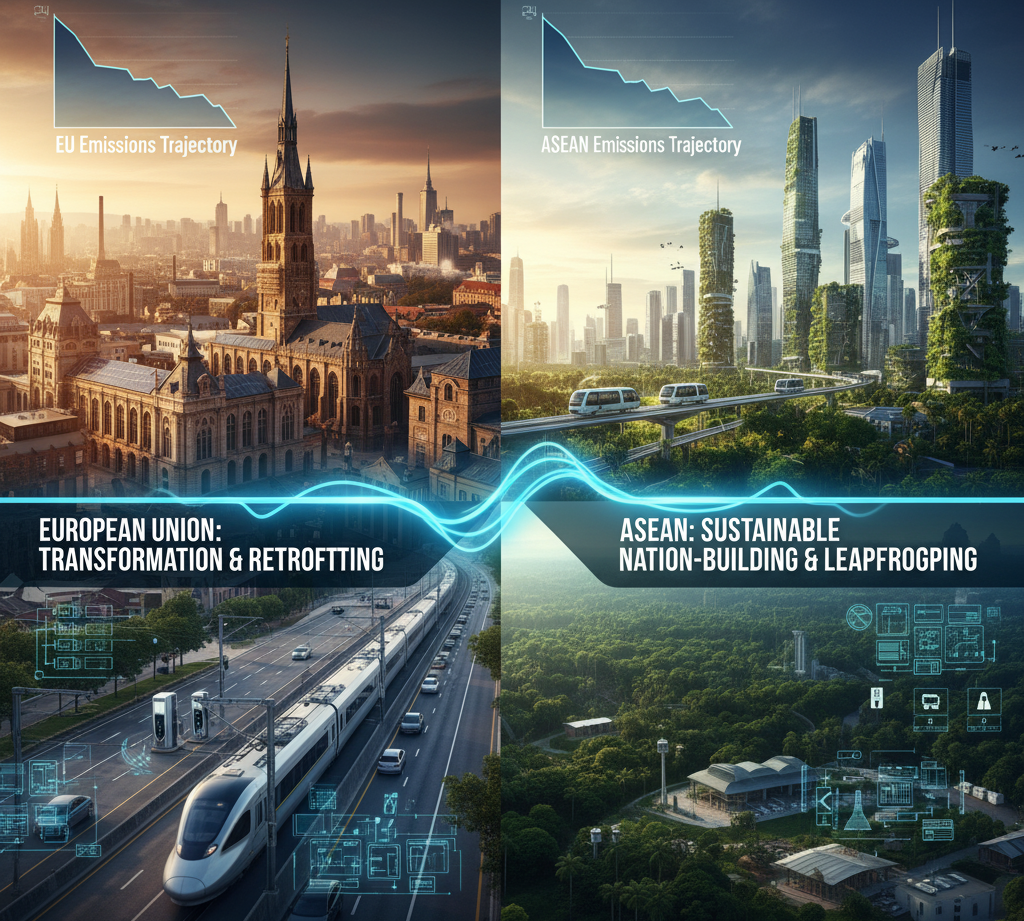Low-Emission Pathways: European Union and ASEAN

SINGAPORE – The Paris Agreement has drawn a clear and urgent global mandate to regulate the global average temperature to well below 2°C above pre-industrial levels and pursue efforts to limit it to 1.5°C. It is an ambitious goal that necessitates a fundamental transformation of the global economy, steering it onto "low-emission pathways." These pathways are more than just a set of environmental policies; they are comprehensive strategies for socio-economic development that align growth and improved livelihoods with climate stability. As laid out in the OECD report Investing in Climate, Investing in Growth, achieving this transition is both a climate imperative and a unique opportunity to generate inclusive, resilient, and sustainable economic growth.
In order to achieve a viable low-emission pathway, there are three non-negotiable features:
- An early peak in global greenhouse gas (GHG) emissions, ideally as soon as possible, as delays dramatically increase future costs and risks.
- A subsequent rapid and deep reduction in GHG emissions, driven by a profound transformation of the energy, industrial, transport, and land-use sectors.
- The achievement of net-zero emissions (or net-negative emissions) in the second half of the century, where any remaining anthropogenic emissions are balanced by removals from the atmosphere.
The implementation of these principles depends upon a nation's or region's level of economic development, existing infrastructure, energy mix, governance capacity, and demographic trends. The challenges and opportunities are not the same for the European Union (EU) and the Association of Southeast Asian Nations (ASEAN).
The essential features of low-emission pathways for the EU and ASEAN present a study in contrasts, rooted in their different stages of development.
| Feature | European Union (EU) | ASEAN |
|---|---|---|
| Primary Focus | Transformation & retrofitting of existing high-carbon systems. | Sustainable Nation-Building & Leapfrogging to avoid high-carbon systems. |
| Emissions Trajectory | Immediate, steep, and continuous decline from the outset. | Continued growth to an early peak (c. 2025-30), followed by decline. |
| Infrastructure Priority | Upgrading aging assets; mass retrofitting of buildings. | Building new, low-carbon infrastructure to provide universal access and avoid lock-in. |
| Key Sectoral Challenge | Decarbonizing hard-to-abate heavy industries (steel, cement). | Halting deforestation and transforming the land-use sector into a net carbon sink. |
| Policy Orientation | Regulatory standards, carbon pricing, and R&D for breakthrough technologies. | Integrated planning, investment frameworks, and international support to scale clean technology. |
Source : OECD 2017
For the European Union, the path is one of profound industrial and societal transformation, demanding innovation and significant capital to overhaul the carbon-intensive legacy of the 20th century. For ASEAN, the path is one of foresight and strategic investment, with the unprecedented opportunity to build the foundations of a 21st-century economy that is prosperous, inclusive, and climate-resilient from its inception. The success of both will be critical to achieving the goals of the Paris Agreement and securing a sustainable future for all.
Back to Events & Publications